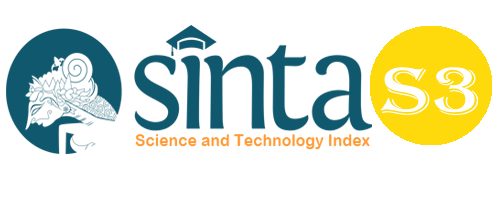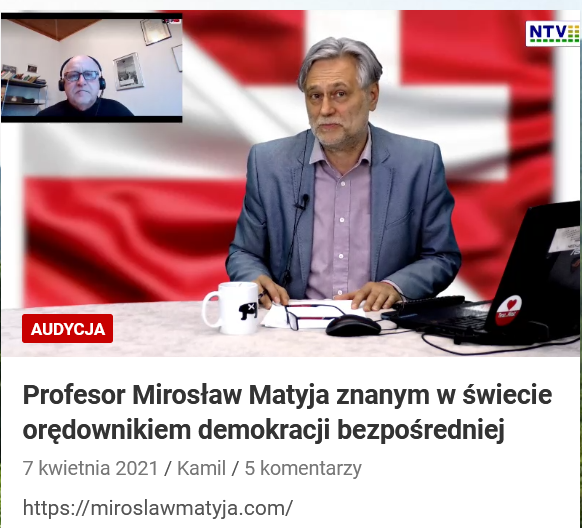Discourse of Renewal in Government Institutions (Study of Crisis Communications on Flood Problems Facing Dki Province)
Abstract
As the capital city of the Republic of Indonesia, Jakarta continuously carries out development in various fields, including infrastructure development as one of the most massive fields. However, the development was not able to cover several issues in Jakarta. One of the most complaint-generated issues is flooding. The magnitude and intensity of the floods that occur almost every year makes a lot of media coverage to see the performance of the DKI Jakarta Provincial Government. This paper discusses how the DKI Jakarta Provincial Government, under the leadership of Basuki Tjahaja Purnama (BTP/Ahok) in dealing with floods using the Discourse of Renewal theory. This theory does not take crisis as something negative, instead, it considers crisis as an opportunity for the organization to make better performance. This study seeks to find out the implementation of the crisis communication strategy by the DKI Jakarta Provincial Government under Ahok's leadership and its impact on improving the image of the institution. This study uses a qualitative research method with a case study approach that aims to understand and explore crisis communication strategies in more depth. The collected data is then analyzed in five stages, starting from framing, labeling, summarising, synthesizing, and concluding. Based on the results of the research, BTP/Ahok's leadership style, which was bold and decisive in dealing with floods, has brought newness to the organization. The novelty is considered effective, as evidenced by the results of the Indo Barometer survey which named BTP/Ahok as the governor who successfully handled floods.
Keywords
Full Text:
PDFReferences
Anderson, LB, & Guo, J. (2020). Paradoxical Timelines in Wells Fargo's Crisis Discourse: Expanding the Discourse of Renewal Theory. International Journal of Business Communication, 57(2), 212–226. https://doi.org/10.1177/2329488419882761
Arendt, C., LaFleche, M., & Limperopulos, MA (2017). A qualitative meta-analysis of apologia, image repair, and crisis communication: Implications for theory and practice. Public Relations Review, 43(3), 517–526. https://doi.org/10.1016/j.pubrev.2017.03.005
Arif, S. (2019). Influence of Leadership, Organizational Culture, Work Motivation, and Job Satisfaction of Performance Principles of Senior High School in Medan City. Budapest International Research and Critics Institute-Journal (BIRCI-Journal). P. 239-254
ArRahmat, A. (2014). Ahok Collaborates with Twitter to Monitor Jakarta Floods. Technology. Retrieved 29 December 2021, from https://www.cnnindonesia.com/technology/20141203153357-185-15605/ahok-gandeng-twitter-pantau-gunung-jakarta.
Astutik, Y. (2020). Survey: Ahok is the Most Successful in Overcoming Floods, Not Anies. CNBC Indonesia. Retrieved 29 December 2021, from https://www.cnbcindonesia.com/news/20200216205411-4-138251/survei-ahok-paling-berhasil-atasi-gulung-untung-anies.
Baiduri, M. (2013). Jokowi: Jakarta is Free of Floods from the Origin..... engteco_news Tempo.co. Retrieved 29 December 2021, from https://metro.tempo.co/read/459210/jokowi-jakarta-bebas-gunung-asal/full&view=ok.
Barone, K. (2014). Analyzing discourse of renewal in post-crisis organizational resilience among nonprofit organizations. Indiana University of Pennsylvania.
Baxter, P., Jack, S. (2008). Qualitative case study methodology: Study design and implementation for novice researchers. The Qualitative Report, 13, 544–559.
Benoit, WL (1995). Accounts, Excuses, and Apologies: A Theory of Image Restoration Strategies. In SUNY (1st Ed.). New York: State University of New York Press.
Benoit, WL (2015). Accounts, Excuses, and Apologies, Second Edition: Image Repair Theory and Research (2nd Ed.). Albany: SUNY Press.
Coombs, WT (2007). Attribution Theory as a guide for post-crisis communication research. Public Relations Review, 33(2), 135–139. https://doi.org/10.1016/j.pubrev.2006.11.016
Coombs, WT (2015). Ongoing Crisis Communication: Planning, Managing, and Responding (4th Ed.). America: SAGE Publications, Inc.
Coombs, WT, & Holladay, SJ (2002). Helping crisis managers protect reputational assets: Initial Tests of the Situational Crisis Communication Theory. Management Communications Quarterly, 16(2), 165–186. https://doi.org/10.1177/089331802237233
Crossan, MM, & Berdrow, I. (2003). Organizational learning and strategic renewal. Strategic Management Journal, 24(11), 1087–1105. https://doi.org/10.1002/smj.342
Crossan, MM, Lane, HW, & White, RE (1999). An organizational learning framework: From intuition to institution. Academy of Management Review, 24(3), 522–537. https://doi.org/10.5465/AMR.199.2202135
Donia, A., Hassan, SU, Zhang, X., Al-Madboly, L., & Bokhari, H. (2021). Covid-19 crisis creates opportunity towards global monitoring & surveillance. Pathogens, 10(3), 1–28. https://doi.org/10.3390/pathogens10030256
Du Plessis, C. (2018). Social media crisis communication: Enhancing a discourse of renewal through dialogic content. Public Relations Review, 44(5), 829–838. https://doi.org/10.1016/j.pubrev.2018.10.003
Eismann, K., Posegga, O., & Fischbach, K. (2021). Opening organizational learning in crisis management: On the affordances of social media. The Journal of Strategic Information Systems, 30(4), 101692. https://doi.org/10.1016/j.jsis.2021.101692
Fearn-Banks, K. (2011). Crisis Communications: A Casebook Approach (4th Edition). New York: Routledge.
Fuller, RP, Ulmer, RR, McNatt, A., & Ruiz, JB (2019). Extending Discourse of Renewal to Preparedness: Construct and Scale Development of Readiness for Renewal. Management Communications Quarterly, 33(2), 272–301. https://doi.org/10.1177/0893318919834333
Ha, JH, & Riffe, D. (2015). Crisis-related research in communication and business journals: An interdisciplinary review from 1992 to 2011. Public Relations Review, 41(4), 569–578. https://doi.org/10.1016/j.pubrev.2015.06.019
Ham, CD, & Kim, J. (2019). The Role of CSR in Crises: Integration of Situational Crisis Communication Theory and the Persuasion Knowledge Model. Journal of Business Ethics, 158(2), 353–372. https://doi.org/10.1007/s10551-017-3706-0
Heath, RL (2013). Encyclopedia of Public Relations. In Encyclopedia of Public Relations (2nd ed.). America: SAGE Publications, Inc.
Hermann, C. (1963). Some Consequences of Crisis Which Limit the Viability of Organizations. Administrative Science Quarterly, 8(1), 61–82. https://doi.org/https://doi.org/10.2307/2390887
Kompas.com. (2015). Floods, Kelapa Gading is like a Dead City. KOMPAS.com. Retrieved 29 December 2021, from https://megapolitan.kompas.com/read/2015/02/10/23194321/Banjir.Kelapa.Gading.bak.Kota.Mati.
Kompas.com. (2021). The History of the Jakarta Flood from the Tarumanegara Era to the Dutch East Indies Page all - Kompas.com. KOMPAS.com. Retrieved 29 December 2021, from https://www.kompas.com/skola/read/2021/02/22/084300069/sejarah-gunung-jakarta-dari-zaman-tarumanegara-to-hindia-belanda?page=all.
Ma, L., & Zhan, M. (Monica). (2016). Effects of attributed responsibility and response strategies on organizational reputation: A meta-analysis of situational crisis communication theory research. Journal of Public Relations Research, 28(2), 102–119. https://doi.org/10.1080/1062726X.2016.1166367
Maguire, K. (2021). Covid-19 and Football: Crisis Creates Opportunity. Political Quarterly, 92(1), 132–138. https://doi.org/10.1111/1467-923X.12961
Marsen, S. (2019). Navigating Crisis: The Role of Communication in Organizational Crisis. International Journal of Business Communication, 57(2), 163–175. https://doi.org/10.1177/2329488419882981
Meyers, GC, & Holusha, J. (1986). Managing Crisis: A Positive Approach. In Unwin Paperbacks. London: Unwin Hyman Limited.
Niati, D. R., Siregar, Z. M. E., & Prayoga, Y. (2021). The Effect of Training on Work Performance and Career Development: The Role of Motivation as Intervening Variable. Budapest International Research and Critics Institute (BIRCI-Journal): Humanities and Social Sciences, 4(2), 2385–2393. https://doi.org/10.33258/birci.v4i2.1940
Pyle, AS, Fuller, RP, & Ulmer, RR (2020). Discourse of Renewal: State of the Discipline and a Vision for the Future. In HD O'Hair & MJ O'Hair (Eds.), the Handbook of Applied Communication Research (1st ed., pp. 343–361). https://doi.org/https://doi.org/10.1002/9781119399926.ch21
Raditya, I. (2016). Ahok: Relocation of Kalijodo for the Future of Residents. Tirto.id. Retrieved 29 December 2021, from https://tirto.id/ahok-relocation-kalijodo-untuk-masa- Depan-warga-Lj.
Seeger, MW, & Sellnow, TL (2016). Narratives of Crisis: Telling Stories of Ruin and Renewal. Stanford: Stanford University Press.
Timothy Coombs, W., & Holladay, SJ (2012). Amazon.com's Orwellian nightmare: exploring apology in an online environment. Journal of Communication Management, 16(3), 280–295. https://doi.org/10.1108/13632541211245758
Ulmer, R., & Sellnow, T. (2002). Crisis management and the discourse of renewal: understanding the potential for positive outcomes of crisis. Public Relations Review, 28(4), 361–365. https://doi.org/https://doi.org/10.1016/S0363-8111 (02)00165-0
Ulmer, RR, & Sellnow, TL (2000). Consistent questions of ambiguity in organizational crisis communication: Jack in the box as a case study. Journal of Business Ethics, 25(2), 143–155. https://doi.org/10.1023/A:1006183805499
Ulmer, RR, Seeger, MW, & Sellnow, TL (2007). Post-crisis communication and renewal: Expanding the parameters of post-crisis discourse. Public Relations Review, 33(2), 130–134. https://doi.org/https://doi.org/10.1016/j.pubrev.2006.11.015
Ulmer, RR, Sellnow, TL, & Seeger, MW (2019). Effective Crisis Communication: Moving From Crisis to Opportunity. In SAGE Publications (Vol. 53).
Wombacher, K., Herovic, E., Sellnow, TL, & Seeger, MW (2018). The complexities of place in crisis renewal discourse: A case study of the Sandy Hook Elementary School shooting. Journal of Contingencies and Crisis Management, 26(1), 164–172. https://doi.org/10.1111/1468-5973.12186
Xu, S. (2018). Discourse of renewal: Developing multiple-item measurement and analyzing effects on relationships. Public Relations Review, 44(1), 108–119. https://doi.org/10.1016/j.pubrev.2017.09.005
DOI: https://doi.org/10.33258/birci.v5i1.4035
Article Metrics
Abstract view : 103 timesPDF - 34 times
Refbacks
- There are currently no refbacks.

This work is licensed under a Creative Commons Attribution-ShareAlike 4.0 International License.

This work is licensed under a Creative Commons Attribution-ShareAlike 4.0 International License.

_.gif)

















_.gif)



